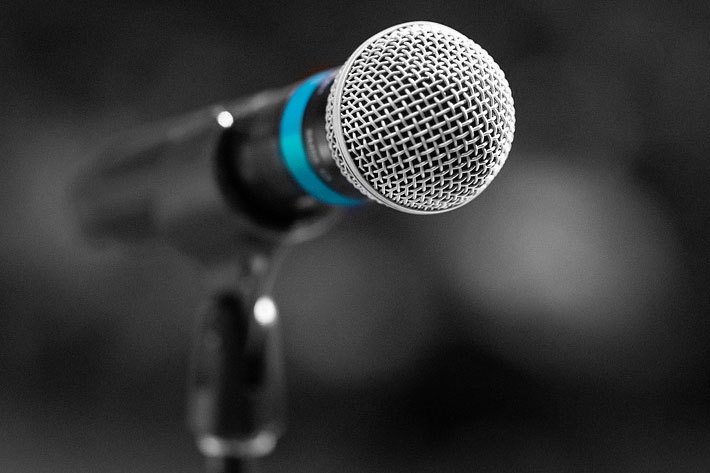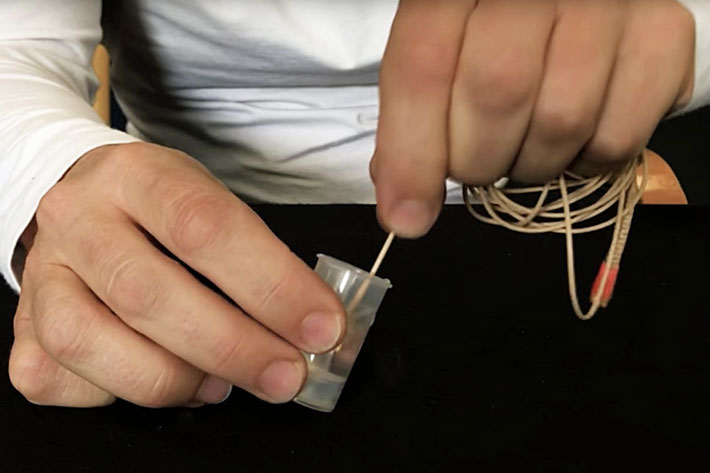
Cleaning microphones requires different techniques but, in some cases, nothing beats a good wash with demineralized water, stirring and shaking, as DPA shows in one 2018 article that is so actual now.
It should not come as a surprise to anyone that microphones get contaminated with cold and flu germs in a number of ways. You’ve seen it at concerts, but it happens everywhere and gets worst the closer the speaker or singer’s mouth is to the microphone: saliva gets all over the mic and users may even cough or sneeze close to it.
Keeping a microphone clean can be a chore, but is an essential part of work and it has always been, even more so now. There is no escape, even if you’re broadcasting from home, as so many professionals are now: a clean microphone is a must. Not just because of the germs, but also because a dirty microphone can translate into poor sound recording. It’s not just dirt and dust, it’s also the spit and sweat of the user, on in some cases multiple users, creating the ideal breeding ground for germs and bacteria.
Different microphones require different cleaning processes, and usually different microphone brands have guides explaining the best way to clean their products. Shure, for example, has one article Keeping Your Microphone Clean, published in 2013, that points to different solutions available to keep germs, saliva, and other bodily effusions away from microphones. If you “Google” after “cleaning microphones”, you’ll discover that from companies selling mics to studios, everybody has published information about the subject.

How to wash your miniature microphone
DPA Microphones, the leading Danish Professional Audio manufacturer of high-quality condenser microphone solutions for professional applications, published in 2018 a guide – 5 Simple Steps To Wash Your DPA Microphone – to extend the life and preserve the sound of its miniature microphones which applies to both omnidirectional and directional mics. The process uses, according to the company, a particular ‘cocktail’ and actually involves both stirring and shaking! It does not use any cleaning fluids or any special product whatsoever, but demineralized water!
Recently, the company shared more information about the subject in one article – Proper Microphone Hygiene – in its Mic University. In the article DPA notes that “much of the time, microphones are used in situations where germs can spread with ease” adding that “ cleaning your mics regularly is a good idea for everyone.” Even if you’re working from home, as many of us are now, and are the only one using the microphone used in your make-shift broadcast studio.
Use this period to clean ALL your mics
The article covers DPA’s miniature microphones again, with some updated information added to the 2018 article, but also shares cleaning tips applied to handheld and pencil microphones, foam windscreens and cables. Warm water and soap is widely used, as you’ll discover, and cables, which cannot tolerate alcohol, can be cleaned with coconut or olive oil. The company also notes that headsets, clips, booms, grids and adapters can be wiped down on their surface with a cloth moistened sparingly with isopropyl alcohol.
The cleaning guide from DPA and other information that you can find online will help you to find ways to ensure proper mic hygiene, a task that will, no doubt, occupy some of your time at home, or down-time at the studio, and contribute to less sharing of germs and, in the end, better sound quality. Even after this period, keeping these tips in mind might be a good idea, and regularly clean your collection of microphones. The experience we are going through with COVID-19 will, no doubt, make everyone be more careful with their mics, because we’ve understood, the hard way, the importance of hygiene.

